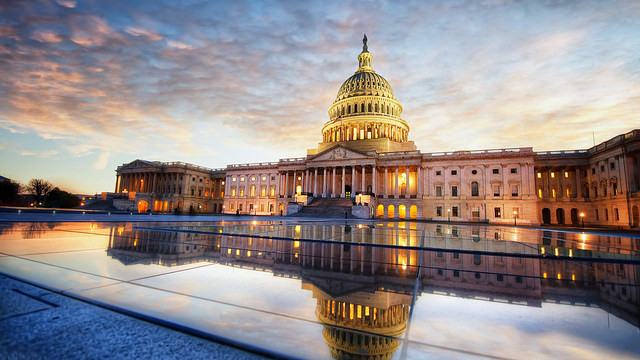
It’s 20 January, Inauguration Day in the United States, and nobody now doubts that we’re destined to live in what the Chinese would call ‘interesting times’. The new president’s campaign rhetoric strongly intimated that under his self-proclaimed ‘America First’ posture, traditional American strategy and alliance politics would undergo a major change. And what’s already clear is that his approach to dealing with allies and adversaries will be based less on their traditional roles in US foreign policy and more on how he and his foreign and security policy team view other countries’ willingness to adjust their policies to conform with a markedly different set of US economic and strategic priorities.
As part of Trump’s revised posture, there appears to be a greater readiness to embed US power and policy within a more multipolar international power structure—albeit with less emphasis on the importance of international institutions to US policy interests. He’s already criticised the United Nations for ‘not living up to its potential and…causing problems rather than solving them.’ Still, notwithstanding reports of Russian cyber-meddling in the American electoral process assisting Trump’s campaign victory, the president-elect’s desire to seek accommodation with Russia (over likely opposition from key congressional Republicans), suggests nothing less than a radical adjustment to America’s position in the world.
The incoming administration’s geopolitical outlook on the Asia–Pacific is no less seminal. Trump’s musings over the utility of the US’s longstanding ‘one China’ policy as the core principle for governing Sino–American relations, and his equally controversial acceptance of a phone call from Taiwanese President Tsai Ing-wen, strongly signalled that no concrete ‘grand bargain’ would be immediately engineered between his government and the People’s Republic of China. That point has also been underscored in the confirmation testimony of his Secretary-of-State designee, Rex Tillerson, who warned that China must stop its island-building in the South China Sea. He further asserted that the US would seek support from its regional security allies to ensure that China doesn’t employ what reclaimed islands it has constructed to disrupt the flow of maritime trade through the region.
Indeed, the president-elect’s cabinet and national security choices point to the adoption of a US foreign policy management style more comparable with that of the business world than with one driven by classic geopolitics. In this context, Trump’s campaign threat to slap substantial tariffs on Chinese exports to the US in retaliation for what he viewed to be Chinese currency manipulation, and his appointment of Peter Navarro, a strong critic of China’s trade and security policies, as director of the White House’s National Trade Council, underscored the contrast in the incoming president’s perspectives of China and Russia. Trump has jettisoned President Barack Obama’s promotion of the multilateral Trans-Pacific Partnership (TPP) agreement as a basis for underwriting US trading and commercial interests in Asia. Perhaps most fundamentally, the president-elect’s view of how US policy should be managed within the broader international relations and global security arena seems to be shaped by his self-anointed image of being a proven ‘winner’ in the international corporate environment and his confidence that this background would be readily adaptable to managing an emerging and highly complicated world order.
Mira Rapp-Hooper, from the Center for a New American Security, has recently intimated that if Trump and his advisers are determined to stake out a US policy towards Asia in which its regional alliances and traditional approaches to order-building lose their traditional centrality, it may take months for the new administration to fashion an Asia–Pacific strategy. Or, as likely, ‘[g]iven Trump’s devotion to unpredictability, he might not craft such a strategy at all’. The incoming administration could ‘instead pick and choose from a neo-Jacksonian, unilateralist buffet, deciding what “America first” means as circumstances change.’
Those are valuable insights. But I’d argue that the new president will enjoy neither the luxury of time nor the unbridled freedom to choose from a menu of diverse and possibly disparate policy options, such as the above observation implies. Instead, he’ll be compelled by events and trends in the Asia–Pacific that are unfolding at breakneck speed, and by his own country’s resource constraints, to think and act quickly and coherently if acute regional instability is to be avoided.
Two key factors that will test the new administration’s ability to combine the old with the new in whatever Asia–Pacific policy positions it pursues are:
- the ongoing and expanded North Korean nuclear threat
- the transition of US alliance politics and multilateralism in Southeast Asia and Australia, potentially leading to a substantial power vacuum subject to Chinese exploitation.
Failure to deal in good time with either of those emerging challenges could substantially erode the Trump administration’s foreign policy credibility and permanently undercut the US’s national security interests in the Asia–Pacific.
Over the longer term, it may well be the case that, confronted with resurgent US power, China, Russia or both may be inclined to pursue a ‘grand bargain’ with a ‘greater America’, Japan, India and the ASEAN members for long-term regional order-building. But that scenario seems a distant prospect in 2017, as Trump will apparently be preoccupied with repairing US domestic infrastructure and further resuscitating the US’s economic growth. Still, the outlook’s not entirely bleak. While Trump postulates an ‘America first’ posture, that hardly represents an ‘Asia last’ prescription. Above all else, Trump’s history is shaped by his reputation in the business world for hard but fluid bargaining to derive optimal results for interest-based objectives.

